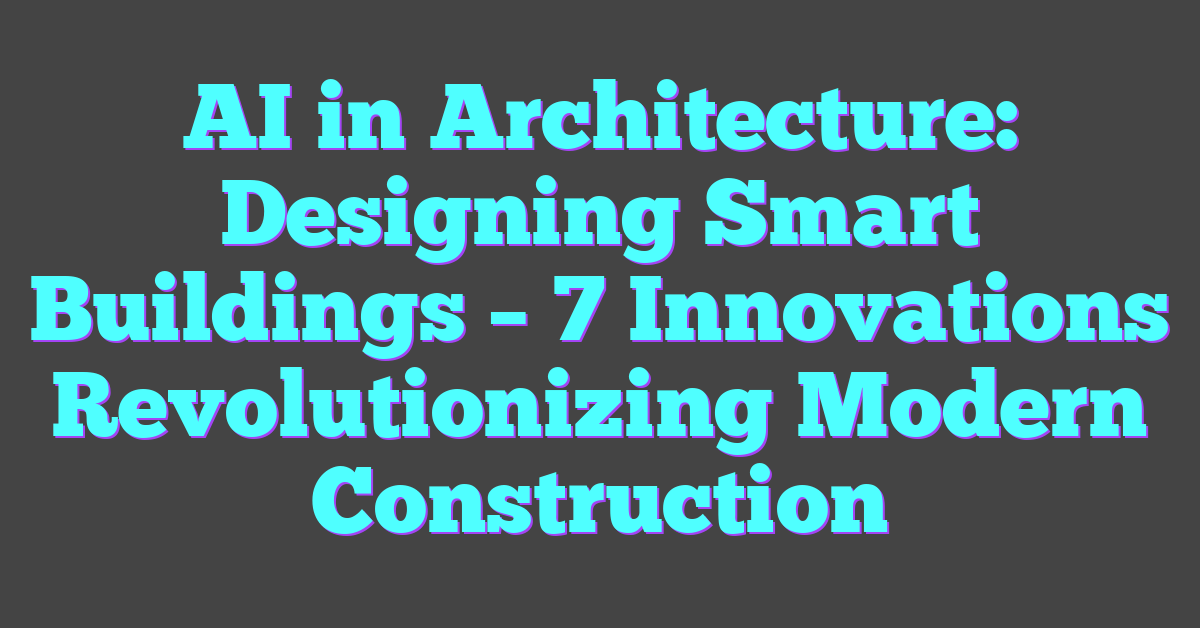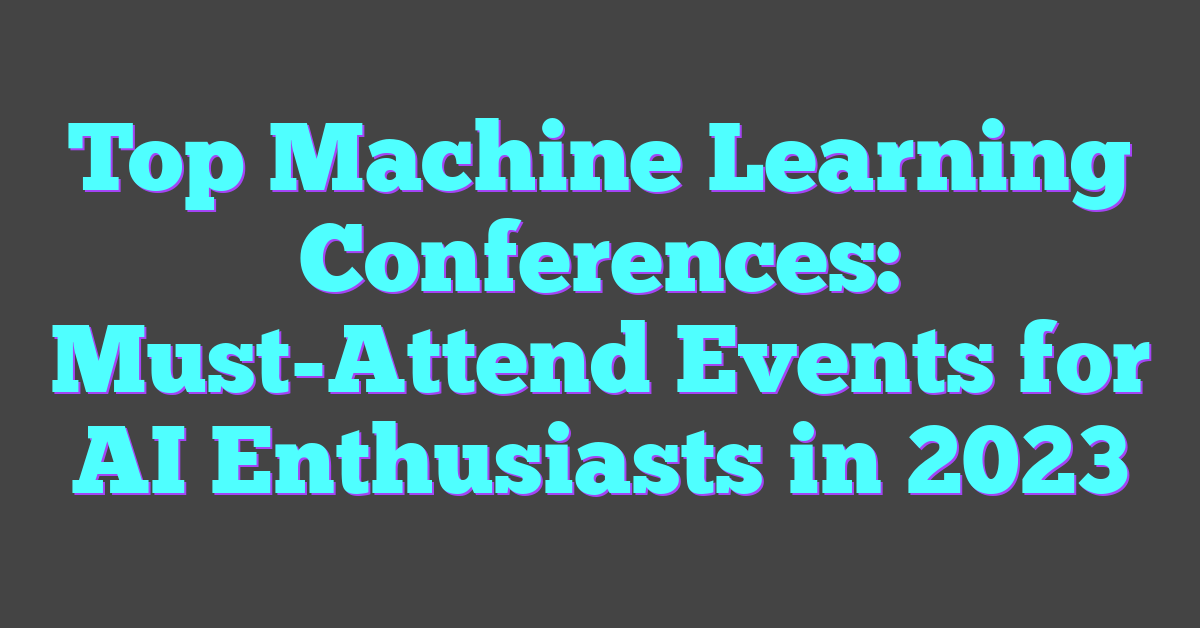Key Takeaways
- AI-Driven Design Optimization: Enhances architectural creativity by automating complex processes and generating multiple design iterations for optimal space and resource utilization.
- Advanced Energy Management: Utilizes intelligent systems to monitor and adjust energy consumption in real-time, significantly reducing utility costs and environmental impact.
- Enhanced User Experience: Smart buildings adapt to occupants’ preferences through AI-integrated IoT devices, improving comfort, productivity, and personalized settings.
- Predictive Maintenance & Automated Construction: Employs machine learning to forecast equipment failures and streamline construction processes, minimizing downtime and ensuring high-quality standards.
- Sustainable and Efficient Structures: AI promotes sustainability by optimizing energy usage, selecting eco-friendly materials, and enabling the creation of intelligent, long-lasting buildings.
- Overcoming Implementation Challenges: Addresses ethical implications and barriers such as data privacy, high initial costs, and the need for specialized expertise to successfully integrate AI in architectural design.
Artificial Intelligence is revolutionizing the field of architecture, enabling the creation of buildings that are not only aesthetically pleasing but also smarter and more efficient. By integrating AI into the design process, architects can analyze vast amounts of data to optimize structures for sustainability, functionality, and user experience.
Smart buildings powered by AI can adapt to their occupants’ needs, manage energy consumption seamlessly, and enhance overall comfort. This blend of technology and design opens up new possibilities, pushing the boundaries of what’s achievable in modern architecture. As AI continues to evolve, the future of building design looks brighter and more intelligent than ever.
The Role of AI in Modern Architecture
AI transforms architectural design by automating complex processes, enabling architects to focus on creativity. Machine learning algorithms analyze vast datasets, optimizing building layouts for energy efficiency and sustainability. Smart software predicts structural issues, reducing maintenance costs and extending building lifespans.

Design Optimization
AI-driven tools generate multiple design iterations quickly, ensuring optimal use of space and resources. Architects leverage these tools to meet specific sustainability standards and aesthetic criteria simultaneously.
Energy Management
Intelligent systems monitor and adjust energy consumption in real-time, lowering utility costs and environmental impact. Buildings equipped with AI can anticipate usage patterns, enhancing overall efficiency.
Enhanced User Experience
Smart buildings adapt to occupants’ preferences, improving comfort and productivity. AI integrates with IoT devices to personalize lighting, temperature, and security settings based on individual needs.
Predictive Maintenance
Machine learning models forecast equipment failures before they occur, minimizing downtime and repair expenses. Proactive maintenance schedules extend the longevity of critical building systems.
Automated Construction
Robotic assistance and AI planning streamline the construction process, increasing precision and reducing errors. Automation accelerates project timelines and ensures higher quality standards.
Data-Driven Insights
AI analyzes user interaction data to inform future architectural decisions, creating spaces that better serve their intended functions. Continuous feedback loops enhance building performance and user satisfaction.
Benefits of AI in Designing Smart Buildings
AI transforms the architecture landscape by introducing advanced capabilities that enhance building design and functionality. These benefits drive the creation of intelligent, efficient, and sustainable structures.
Enhanced Efficiency
AI streamlines the design process by automating complex tasks, reducing project timelines by up to 30%. Machine learning algorithms analyze large datasets to optimize building layouts, ensuring optimal space utilization and resource allocation. Automated systems manage construction schedules, minimizing delays and cost overruns. Additionally, AI-driven tools facilitate real-time collaboration among stakeholders, enhancing decision-making speed and accuracy.
Improved Sustainability
AI promotes sustainable architecture by optimizing energy consumption and reducing environmental impact. Smart algorithms model energy usage patterns, enabling buildings to adjust heating, cooling, and lighting in real-time for maximum efficiency. Predictive analytics forecast maintenance needs, preventing resource waste and extending the lifespan of building systems. Furthermore, AI assists in selecting eco-friendly materials and designs, ensuring compliance with sustainability standards and reducing the carbon footprint of new constructions.
AI Technologies in Architecture
AI technologies revolutionize architectural design by enhancing efficiency and innovation. These technologies enable architects to create smarter, more sustainable buildings through advanced data analysis and automated processes.
Machine Learning Applications
Machine learning optimizes various aspects of architecture:
- Energy Management: Algorithms analyze energy consumption patterns, adjusting heating, cooling, and lighting in real-time to reduce usage by up to 20%.
- Predictive Maintenance: Models forecast equipment failures, minimizing downtime by 30% and extending system lifespans.
- Space Optimization: Analyzes usage data to design layouts that maximize functionality and comfort, improving space utilization by 15%.
- Construction Scheduling: Predicts project timelines and resource needs, reducing delays and cost overruns by 25%.
| Application | Impact Percentage |
|---|---|
| Energy Management | 20% reduction |
| Predictive Maintenance | 30% downtime reduction |
| Space Optimization | 15% improvement |
| Construction Scheduling | 25% reduction |
Generative Design
Generative design leverages AI to create multiple design options:
- Automated Iterations: Generates thousands of design variations quickly, ensuring optimal use of space and resources.
- Sustainability Integration: Incorporates eco-friendly materials and energy-efficient layouts, aligning with green building standards.
- Customization: Tailors designs to specific client needs and site conditions, enhancing user satisfaction and functionality.
- Aesthetic Optimization: Balances functionality with visual appeal, maintaining architectural integrity while meeting modern design trends.
Generative design accelerates the creative process, allowing architects to explore innovative solutions and achieve higher standards of quality and sustainability.
Case Studies of Smart Buildings
The Edge, Amsterdam
The Edge leverages AI to optimize energy consumption and enhance user experience. Intelligent systems monitor real-time data on occupancy, lighting, and temperature, adjusting settings automatically to maximize efficiency.
| Feature | Details |
|---|---|
| Energy Reduction | 70% decrease in energy usage |
| Occupancy Analytics | Real-time space utilization |
| Lighting Control | Automated LED adjustments |
One Bryant Park, New York
One Bryant Park integrates machine learning algorithms to manage HVAC systems effectively. AI-driven predictive maintenance forecasts equipment needs, reducing downtime and maintenance costs.
| Feature | Details |
|---|---|
| HVAC Efficiency | 30% improvement in energy use |
| Predictive Maintenance | 25% reduction in downtime |
| Automated Systems | Enhanced climate control |
The Crystal, London
The Crystal employs AI for sustainable architecture, utilizing smart grids and renewable energy sources. AI systems analyze energy patterns to optimize the use of solar and wind power.
| Feature | Details |
|---|---|
| Renewable Integration | 50% energy from renewables |
| Smart Grid Management | Dynamic energy distribution |
| Energy Optimization | 20% increase in efficiency |
Bosco Verticale, Milan
Bosco Verticale uses AI to maintain its vertical forests, ensuring optimal plant health and growth. AI-driven irrigation systems adjust water usage based on weather forecasts and soil moisture levels.
| Feature | Details |
|---|---|
| Automated Irrigation | Water usage optimized by AI |
| Plant Health Monitoring | Continuous AI analysis |
| Sustainability | Enhanced urban biodiversity |
The Taipei 101, Taiwan
Taipei 101 utilizes AI for earthquake detection and structural health monitoring. AI systems provide real-time alerts and data analysis to ensure building safety and resilience.
| Feature | Details |
|---|---|
| Earthquake Detection | Immediate AI-based alerts |
| Structural Monitoring | Ongoing integrity assessments |
| Safety Enhancements | Increased building resilience |
These case studies demonstrate the diverse applications of AI in enhancing building efficiency, sustainability, and safety across various architectural marvels worldwide.
Challenges and Considerations
While AI enhances architectural design, several challenges and considerations must be addressed to ensure successful implementation.
Ethical Implications
AI integration in architecture raises ethical concerns regarding data privacy, bias, and the displacement of human jobs. Ensuring data used for AI algorithms respects occupants’ privacy is crucial. Additionally, biased datasets can lead to unfair or suboptimal design decisions, necessitating rigorous data validation. The automation of design processes may reduce the demand for certain architectural roles, requiring strategies for workforce transition and skill development.
Implementation Barriers
Several barriers hinder the adoption of AI in architectural design. High initial costs for AI technology and training can be prohibitive for some firms. The complexity of integrating AI systems with existing design tools requires specialized expertise, which may be scarce. Additionally, resistance to change within organizations can slow down the adoption process. Ensuring interoperability between different AI platforms and maintaining data security are also significant challenges that need to be addressed to facilitate seamless implementation.
Conclusion
AI is reshaping the future of architecture by making buildings smarter and more responsive. As technology evolves, architects can push the boundaries of design while ensuring efficiency and sustainability.
The collaboration between human creativity and machine intelligence opens up new possibilities for innovative structures. Embracing AI in architecture not only enhances building performance but also creates spaces that adapt to the needs of their occupants.
With continued advancements and thoughtful implementation, the integration of AI promises to drive the next generation of architectural excellence, fostering environments that are both beautiful and intelligent.




